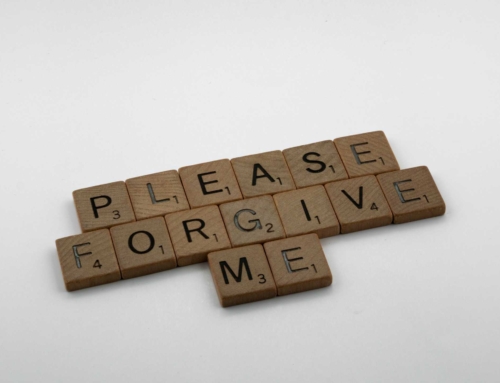Boundaries in marriage may seem like an oxymoron. They should not exist together when two people get married and become “one flesh.” Individuality is not a term one usually hears when there is a discussion on marriage.
 The reality though is that before someone gets married, they are an entity of their own, with feelings, values, thoughts, opinions, and lifestyle choices that do not disappear because they are now in a committed union. They might be re-evaluated, but they still exist. For this reason, there is a need to understand the role and need for boundaries in marriage.
The reality though is that before someone gets married, they are an entity of their own, with feelings, values, thoughts, opinions, and lifestyle choices that do not disappear because they are now in a committed union. They might be re-evaluated, but they still exist. For this reason, there is a need to understand the role and need for boundaries in marriage.
In their best-selling book called Boundaries, Dr. Henry Cloud and Dr. John Townsend say boundaries define us, they show us where we end and where the other person begins, and this leads to a sense of ownership. This ownership of self is what helps couples thrive in love and responsibility.
A healthy marriage consists of two whole people coming together and getting married, living their lives together and apart, physically in the same space but apart in other aspects of life.
There is a saying that says opposites attract and most marriages will attest to this. Even though two different people are attracted and decide to live life together, their individuality still needs to be seen, appreciated, and encouraged by a loving partner. This might be in their choice of occupation, hobbies, friends, etc. Marriage brings two people together who are different and have different abilities and talents.
Regardless of gender, each of us has things we can do and things we cannot. Boundaries help us recognize and communicate those abilities. Violation of a partner’s boundaries comes into play when one spouse tries to control the attitudes, behaviors, choices, and values of the other. In a healthy marriage, which is protected by our ability to set and respect boundaries, we get to live in freedom and responsibility.
Why We Need Boundaries In Marriage
Self-Actualization: Self-actualization is the realization of one’s talents and potentialities. When there is healthy bonding and separateness, spouses afford each other this basic need.
 When one can be able to live their lives to their fullest with the help and support of their partner, that relationship will flourish and grow in intimacy. When a couple has boundaries, they realize that their spouse can find fulfillment in and outside the marriage and they do all they can to support that endeavor.
When one can be able to live their lives to their fullest with the help and support of their partner, that relationship will flourish and grow in intimacy. When a couple has boundaries, they realize that their spouse can find fulfillment in and outside the marriage and they do all they can to support that endeavor.
Self-Care: When couples allow each other to prioritize self-care it gives back to the marriage. Self-care means doing those things that help you mentally, psychologically, and physically. Sometimes self-care might mean doing things on your own without your partner. When you take care of yourself it means you can take care of others and give of yourself more. Allowing each other this opportunity must not be mistaken for self-centeredness.
Fire needs air: This is for couples that do everything together and do not give each other space or breathing room. There is nothing wrong with wanting to do things with your spouse, it only becomes a problem when that is all the two of you do. This can be suffocating for some partners, especially those who recharge on their own or those who might have separate friends and/or hobbies
Avoiding Codependency: A codependent relationship is characterized by one partner’s excessive emotional and psychological reliance on their spouse. Without boundaries, one partner becomes the caretaker, living their lives for their spouse and forgetting their wants and needs in the process. This is typically seen in relationships where one partner might be battling addiction or an illness.
Another situation where relationships can turn to codependency is when one party is solely responsible for the togetherness of the couple, the effort to build and maintain the relationship is one-sided. Having healthy boundaries will ensure that both parties contribute to the building of the relationship. In the case of caregiving, boundaries ensure that spouses become responsible for their actions.
Antidotes to Abuse: Abuse is any harm or threatened harm to another person, or any disregard for their well-being. Without boundaries, abusive partners can use force, violence, and manipulation to control their spouses.
 Spouses in abusive marriages can be empowered by simply knowing that their voice, discomfort, pain, and hurt matter. When they put ultimatums and consequences to their partner’s harmful behavior, they are empowered. These are not easy situations but with help in communicating and enforcing boundaries a marriage in this cycle of abuse can be saved.
Spouses in abusive marriages can be empowered by simply knowing that their voice, discomfort, pain, and hurt matter. When they put ultimatums and consequences to their partner’s harmful behavior, they are empowered. These are not easy situations but with help in communicating and enforcing boundaries a marriage in this cycle of abuse can be saved.
We become responsible for our happiness: One of the difficult truths that married couples struggle to come to terms with is that their spouse is not responsible for their happiness. Each person is responsible for their happiness and fulfillment in life.
Yes, your spouse is an important part of you and your marriage can bring you joy or sorrow. However, ultimately, putting our joy and happiness in the hands of someone else, even if that person is our spouse, is setting us up for disappointment. This is an unrealistic expectation to put on another person.
Communication with Respect: Communication is the bedrock of any relationship. If there are healthy boundaries on how a couple communicates it can deepen their understanding of each other and in turn their intimacy.
If a couple agrees that they will not shout, use abusive language or be critical in their communication it ensures that they will always be willing to listen and share. Boundaries in communication can also extend to how a couple handles moments of conflict or how they talk to each other in front of other people or how they choose to show
Types of Boundaries In Marriage
Emotional Boundaries: Having emotional boundaries in marriage means allowing your spouse to feel however they are feeling without feeling the pressure or need to change it. If they are upset, let them be, if they are excited let them be.
Part of growing in partnership is realizing that even though we might not like our spouse’s emotional response to a situation, we do not have the right to criticize them for having that emotion or invalidating them at that moment. All we can do is create a safe space for them to process.
 Time: Both needs for time spent together and time spent alone need to be communicated and allocated in a healthy relationship. Both partners need to feel that their need to spend time together is seen and that they are not left feeling like they never see their partner. On the other hand, having space in a marriage is important too.
Time: Both needs for time spent together and time spent alone need to be communicated and allocated in a healthy relationship. Both partners need to feel that their need to spend time together is seen and that they are not left feeling like they never see their partner. On the other hand, having space in a marriage is important too.
Intellectual Boundaries: People come from different backgrounds, and because of this they will differ in how they view the world, and how they process the information around them. There is a need to respect each other’s intellectual reasoning even if it differs from our own.
A married couple’s ability to navigate differences in this area will help each partner feel heard, validated, and understood. Having boundaries in this area in a marriage means that both parties are equally given room to be who they are intellectually without being controlled or manipulated to change.
Sexual Boundaries: Even though sex is an act that involves both spouses, for it to be an enjoyable and fulfilling experience it must happen within the confines of communicated boundaries. This means that a couple will have to have conversations about what they are comfortable with or with what they are not comfortable.
Because marriage demands exclusivity, there needs to be an open discussion of what straying from this might mean for couples about what that means. Questions to do with consent and contraception are examples of sexual boundaries that couples can have.
Even though the word boundaries feel restrictive, in the realm of loving relationships it serves to give freedom and offer security and stability. When people feel that they can have the freedom to agree to those things they can do and can say no to those they are not comfortable with they are empowered to be the best version of themselves.
If boundaries are a new concept for you and your relationship and you would want to learn more, please do not hesitate to contact our offices which will partner you with a marriage therapist who will help you navigate them in your own marriage.
“Wedding Bands”, Courtesy of Beatriz Perez Moya, Unsplash.com, CC0 License; “Fence on a Hill”, Courtesy of Sylwia Bartyzel, Unsplash.com, CC0 License; “Above the Clouds”, Courtesy of Andre Benz, Unsplash.com, CC0 License; “Yellow Flowers”, Courtesy of Masaaki Komori, Unsplash.com, CC0 License









